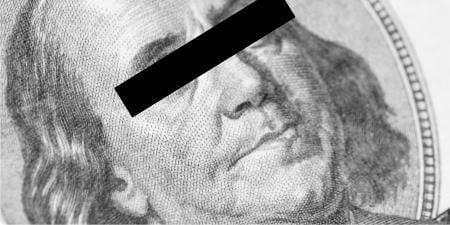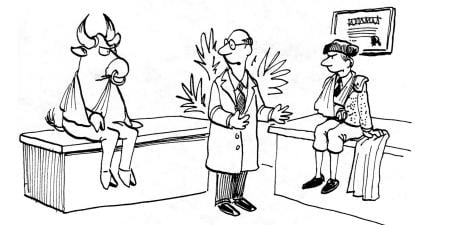"Oh, I see!" one might exclaim on grasping a new intellectual concept. The metaphor of vision has long been linked to knowledge and understanding — indeed, it is only a small etymological move from "sight" to "insight." As the modern technological world becomes ever more reliant on visual culture, however, physicians are challenged to strengthen this metaphorical link by developing new ways of interpreting visual images to create clinical and diagnostic knowledge.
The work of Dr. Carlos Espinel, a Colombian cardiologist at Georgetown University, challenges medical students to hone their diagnostic skills by viewing art from a clinical perspective. In his course "Art Medicine," Dr. Espinel uses the masterpieces of great painters to teach students to enhance their observational skills. Perhaps his most compelling examples of Art Medicine are drawn from a series of Rembrandt Van Rijn's self-portraits, painted over a span of 27 years. Through these paintings, Espinel provides a medical evaluation of Rembrandt's health, combining clinical observation with art technique.
Two self-portraits are compared by Espinel. "In the London Portrait of 1640 (Available at: ibiblio.org), Rembrandt is 34 years old…His eyes shine…but he turns his face and underneath his haughty pose one discovers distressing signs…He has gained some weight...3 lines cross his forehead; 2 others lie underneath his right eye. Note, however, that these lines do not contribute to his expression. They are wrinkles, showing prematurely for his age. Why" [1]? Espinel moves to a later portrait Available at: ibiblio.org for the answer:
The… portrait is startling. It was painted in 1659, so Rembrandt must be 53 years old. Time has passed quickly. But what has it done to him? His face is covered in wrinkles. His skin is thick in places, thin in others… notice the ominous sign — a white arc in his left eye, denser than the normal reflection of light, suggests arcus senilis, cholesterol deposits. The creamy impastos underneath his eyes suggest xanthelasma, high triglycerides. I have counted 9 blotches of rosacea on his face. His nose is bulbous with rhinophyma …Notice that in the other portrait[s] Rembrandt places the light on the right. But in the Washington portrait he puts it directly on his forehead, on his left temporal artery, as if to say, 'Look at me. See what is happening to me' [1].
Dr. Espinel's diagnoses of Rembrandt's ills from the self-portraits have provoked some controversy. Harvard psychiatrist Albert Rothenberg takes Espinel to task for making "medical and psychiatric diagnoses as though the paintings were a series of autobiographical photographs [2]." Another physician writes that without the opportunity to examine the patient physically, "we are left with only inspection — percussion and palpation being out of the question" [3].
These criticisms leveled against Dr. Espinel's work are echoed in concerns raised about another visual medium of diagnosis — the Internet. The 2 questions raised about Dr. Espinel's approach — whether an image can capture the necessary dimensions of illness and whether diagnosis is possible without direct physical contact with the patient — can be easily applied to current discussions regarding medical diagnosis and treatment through the Internet. At the heart of the current uncertainty about medicine at an electronic distance is the question of what information is needed to link sight to insight. Unease about accepting Dr. Espinel's medical diagnosis of Rembrandt based on painted images reflects an implicit recognition that visual evidence is often not enough in the clinical encounter. Yet, as we move toward the age of "telemedicine," in which images increasingly become the evidence of illness, physicians will need to grapple with the question of what constitutes sufficient information for a clinical diagnosis.
References
- Espinel C. Depression, physical illness, and the faces of Rembrandt. Lancet. 1999;354(9174):262-263.
-
Rothenberg A. Depression, physical illness, and the faces of Rembrandt [letter]. Lancet. 1999;354(9187):1392.
-
Zlotnick A. Rembrandt's self-portrait. Lancet. 1998;351(9106):915.



